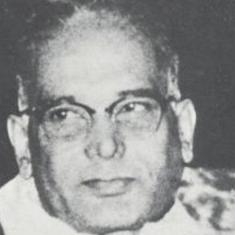This achievement is remarkable for a country that reported 200,000 annual cases of polio in the 1980s and contributed to more than half the world’s polio cases in as recently as 2009. But a number of doctors and public health experts fear that these celebrations might be short-lived if India does not back its vaccination drive with an equally vigorous effort to improve hygiene and sanitation.
Since polio is a viral disease transmitted through faeces and contaminated water, the role of proper sanitation in controlling it seems obvious. But in India, the report cards for universal vaccination and universal sanitation present a stark contrast.
India’s polio immunisation campaign was rolled out in 1995, and its polio-free status has been earned after 19 years of sustained efforts to administer the oral polio vaccine to 170 million children each year. By contrast, most Indian states are not even close to eradicating open defecation, one of the basic requirements of the central government’s Total Sanitation Campaign (now called Nirmal Bharat Abhiyan) launched in 1999.
The lack of sanitation makes it impossible to eradicate the polio virus. The problem has been compounded by the use of the oral polio vaccine – used in most developing countries – which makes use of a live polio virus to build the body’s immunity to the disease, experts say.
“Once it is administered to a child, the live viruses in the vaccine attach themselves to the gut cells and grow there,” said Dr Jayaprakash Muliyal, an epidemiologist in Vellore. In response, the child’s body begins to generate high counts of anti-bodies to fight the virus, building a lasting immunity to the disease. The anti-bodies in OPV do not allow the virus to spread in the bloodstream, protecting the child from polio-induced paralysis.
The other available polio vaccine is an injected one, used in most developed countries. It makes use of a inactivated polio virus to build the body’s immunity, and is considered safer. But in the case of OPV, the live virus continues to grow and multiply in the faeces excreted by the vaccinated child.
In a country where 59% of the rural population still defecates in the open, and clean water is hard to come by, this “wild virus” is always lurking around. It puts at risk children and adults who may have been vaccinated against polio, but whose immunity levels have fallen – often because of poor sanitation.
“Besides, the wild virus can mutate and then attack,” said Dr Mathew Varghese, an orthopaedic surgeon who runs one of India’s few dedicated polio wards at Delhi’s St Stephen’s Hospital.
In fact, reports indicate that in the past few years, India has seen a rise in the number of cases of non-polio acute flaccid paralysis, a condition similar to the paralysis inflicted by polio. One group of medical practitioners believes these numbers have risen because of better surveillance of polio and increased reporting of these cases.
Another group, however, believes the rising numbers of acute flaccid paralysis are connected to OPV. “Research is not conclusive, but we believe it corresponds with the increase in dosage of the oral polio vaccine,” said Anant Phadke, co-convener of Maharashtra-based health non-profit Jana Arogya Abhiyan.
Now that India has been declared polio-free, it is likely to make a gradual shift from OPV to IPV, which is expensive and available only in the private health sector so far. For several doctors, this focus on vaccination is sufficient to control the diseases like polio.
“Smallpox, polio, measles and rubella are good examples of diseases that can be eradicated irrespective of sanitation, nutrition or poverty,” said Dr T Jacob John, an associate professor of community medicine at the Christian Medical College in Vellore.
However, others like Varghese believe this is only a short-term solution. “The conquest of polio in the US and Europe was done without national immunisation, by providing fresh water and universal sanitation,” said Varghese. Ensuring sanitary conditions would also eliminate the most common diarrhoeal diseases that increase child mortality and lower immunity, he said. “The value of the vaccine must not be discounted, but the ideal solution is the long-term one of clean water supply and universal sanitation.”
Phadke agrees. “Sanitation and nutrition are the fundamentals,” he said. “Vaccination should be supplementary to them.”










